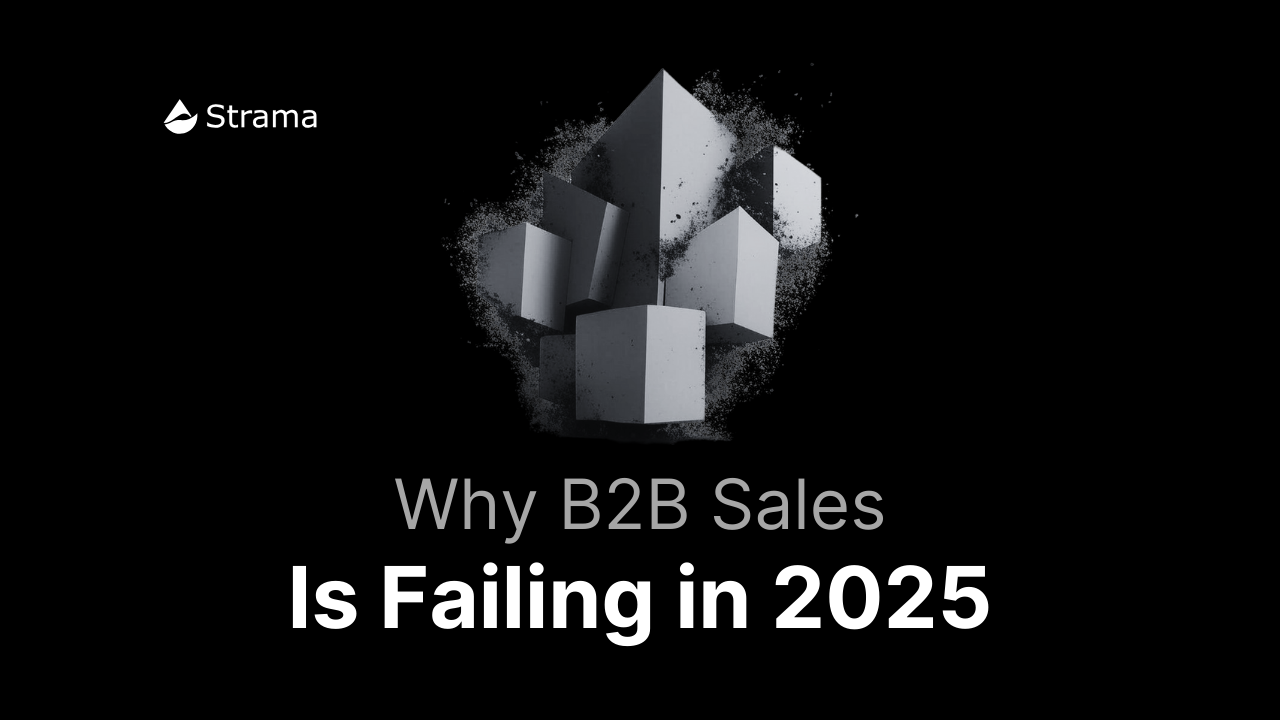Friday, January 17, 2025
Why B2B Sales Outreach Is Failing in 2025


Here's the brutal reality of B2B sales in 2025: Your sales team faces an impossible choice. Spend 6 hours per week researching prospects for personalized outreach that might work, or send generic emails that definitely won't. Either way, 91.5% of those emails fail to get any response. Meanwhile, your prospects are drowning in 121 emails per day, getting better at spotting even "AI-personalized" attempts at engagement, and your pipeline targets keep growing. This isn't just a productivity problem. It's a fundamental breakdown of how B2B sales outreach works.
The Modern Inbox Crisis
The numbers tell a sobering story:
- 121: Average emails an office worker receives daily (Radicati Group)
- 6: Hours sales reps spend weekly on prospect research (EBQ)
- 8.5%: Average response rate to outreach emails (Expanded Ramblings)
But these statistics only scratch the surface of a deeper problem. While your team meticulously researches prospects and crafts messages, buyers are becoming increasingly adept at spotting – and ignoring – anything that feels less than genuinely personalized.
The Personalization Gap: Beyond Basic AI
Current "AI-personalized" outreach typically follows a predictable pattern:
- Custom first line referencing recent company news
- Generic body content barely masking the template beneath
- Follow-ups that show no awareness of previous touchpoints
The result? Prospects immediately recognize this surface-level personalization for what it is: a technological Band-Aid on a deeper wound.
The Real Cost of Current Approaches
Let's break down why both manual and automated approaches are failing:
Basic Automation
- Scales easily
- Fast setup
- Consistent output
- Superficial personalization
- Lacks context
- Poor engagement
Manual Research
- Deeply personalized
- Higher response rates
- Better relationship building
- Time-intensive
- Unsustainable at scale
- Limited reach
Neither approach solves the fundamental challenge: achieving genuine personalization at scale without sacrificing quality or overwhelming your team.
Why Traditional Solutions Fall Short
Current tools and platforms attempt to bridge this gap but fall short in three critical areas:
- Depth of Personalization
- Most tools only customize basic fields like names and companies
- Unable to maintain context across multiple touchpoints
- Fail to incorporate real-time insights and updates
- Workflow Integration
- Require manual intervention for meaningful personalization
- Create additional work rather than reducing it
- Fragment attention across multiple platforms
- Scalability vs. Quality
- Force teams to choose between reach and relevance
- Cannot maintain personalization quality at higher volumes
- Lack adaptive learning from engagement patterns
The Path Forward
The next evolution in sales outreach must address these fundamental challenges. Imagine if your team could:
- Transform hours of manual research into minutes
- Maintain genuine personalization across entire sequences
- Scale meaningful conversations without scaling headcount
This isn't just wishful thinking – advances in AI and autonomous systems are making this possible, enabling sales teams to deliver hyper-relevant outreach while reclaiming valuable selling time.
Critical Questions for Sales Leaders
As you evaluate your current outreach strategy, consider:
- What percentage of your team's time is spent researching versus actively engaging with prospects?
- How do your response rates vary between deeply personalized and partially automated outreach?
- Are your current tools truly solving the personalization challenge, or just shifting the burden?
The Bottom Line
The numbers don't lie: B2B sales outreach is at a breaking point. The old playbook of basic automation or manual grunt work isn't just inefficient – it's unsustainable. Sales leaders who adapt to deliver genuine, scalable personalization will define the next era of success.
The future of sales outreach isn't about better templates or more data fields. It's about fundamentally reimagining how we engage with prospects at scale. The technology to make this possible exists today – the question is, are you ready to embrace it?